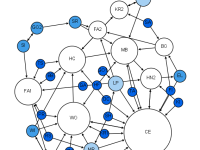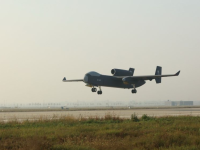Report. Pollution Politics : power, accountability and toxic remnants of war.

Waste. September 2014. In the first of two major reports, Aneaka Kellay examines how the weakness of current international humanitarian law allows the generation of conflict pollution that can impact both civilian health and the environment for long after the cessation of hostilities. The report argues that a new mechanism is needed to prevent and remedy environmental damage, to increase accountability and improve post-conflict response and assistance. The executive summary and recommendations are presented below, and the full text can be downloaded from here.
Executive summary and recommendations
Introduction
Humanity’s dependency on the environment is unquestionable. Clean air, water and food are essential to survival, therefore civilian protection during and after armed conflict require the effective protection of the environment. Yet this field remains underdeveloped:
“Naturally, humanitarian organizations, non-governmental organizations and media tend to focus on and respond to these immediate consequences; for example, the killing of civilians, mistreatment of prisoners, rightly received widespread media attention… although the effects might not be as shocking and immediate, the release of toxic products during armed conflict has grave and long-term impacts on the enjoyment of human rights.”[1]
Greater attention is needed on the impact of conflict on people and the environment, and on the legal system that would hold those responsible for damage to account. This report examines:
· military practices and conflict pollution,
· the relevance and applicability of current legal regimes,
· existing accountability mechanisms and the power dynamics between polluters and the polluted, and,
· impacts on affected states and the protection of civilians and the environment.
What are toxic remnants of war?
There is growing recognition by states, militaries and international organisations of the environmental impact of conflict and military practices. The term ‘toxic remnants of war’ (TRW) has been coined to facilitate greater scrutiny of the subject.
TRW can be defined as: ‘Any toxic or radiological substance resulting from military activities that forms a hazard to humans and ecosystems.’
In this report, TRW have been categorised as direct or indirect. Direct TRW are an immediate result of military activity. For example, pollution from targeting industrial infrastructure or toxic residue from munitions use.
Indirect TRW result from sequences of events or conditions connected to conflict or instability. For example, during the 2003 invasion of Iraq a number of industrial sites were damaged by conflict or simply abandoned. These derelict sites were left unsecured and were subsequently looted, exposing people to highly toxic substances.

A frightened villager shows the lid of a barrel that contained ‘yellowcake’ (uranium oxides) taken from the Tuwaitha nuclear facility Iraq. The family used this radioactive barrel to store water and are complaining of rashes and skin problems. The nuclear facility was left unsecured by occupying forces after the fall of Saddam Hussein’s regime. This illustrates the humanitarian impact of indirect TRW. Philip Reynaers / Greenpeace 22.06.2003
International law, environmental protection and the conflict cycle
International Humanitarian Law’s (IHL) current inability to prevent most wartime environmental damage is widely acknowledged.[2] Many scholars, together with the United Nations Environment Programme (UNEP), argue that IHL’s provisions for environmental protection in conflict need clarifying and strengthening. The inapplicability of much IHL in respect to non-international conflict is an additional barrier, particularly given the prevalence of internal and transnational conflict.[3]
A focus on the rights of individuals rather than the regulation of war means that Human Rights Law (HRL) could provide more robust protection for civilians and the environment. HRL can assist in clarifying obligations for clean-up and the assistance of TRW casualties. In addition, a human rights based approach would make no distinction between types of conflict.
International Environmental Law (IEL) provides norms and standards that militaries should be held accountable to throughout the conflict cycle. It was established in 2008 that armed conflict: “does not necessarily terminate or suspend the operation of [environmental] treaties” between belligerents, or between belligerents and neutral parties.[4] Analysis is ongoing on what the continued applicability of IEL during conflict means in practice.
An international mechanism is needed to ensure that principles enshrined within IHL, IEL and HRL can be upheld, and to ensure that civilians and the environment they depend on are better protected.
Military practice and toxic remnants of war
Military practices are central to the generation of TRW before, during and after conflict.
While environmental awareness within the military is slowly increasing, mission success still takes precedence. Because environmental protection within international law is poorly defined and enforced, stronger regulation is needed to ensure military necessity does not trump environmental and humanitarian concerns.
Significant environmental mismanagement by the United States (US) army during the occupation stage of the Iraq War (2003–2011) reveals that environmental damage is not restricted to harm deemed necessary by operational requirements.[5] It is also the consequence of a systemically poor regard for environmental protection.
After conflict, mismanaged military waste poses a considerable threat to public health. Belligerent states are not currently obliged to assist the post-conflict clean-up of TRW, and assistance has only been provided when it has been considered strategically or diplomatically useful. The question of whether polluters should be held accountable for post-conflict toxic waste, and land remediation efforts under the Polluter Pays principle should be explored.
Some progress is being made in reducing military pollution in peacetime and in limiting the exposure of military personnel. However the impact of military toxics on civilians and the environment in conflict settings remains under-researched.
The politics of accountability
A weak legal system with few obligations and a lack of effective implementation leads to an ad hoc approach to resolving TRW. Ad hoc approaches enable politically powerful actors to gain the advantage in bilateral agreements, in the enforcement of international law and in avoiding liabilities. Less powerful actors have difficulty in gaining access to reparations.
There is a greater risk of severe military pollution where uneven power dynamics make it difficult to hold polluters to account. Strong national environmental legislation and governance can shift this dynamic. Weaker or fragile states typically have less capacity and fewer resources for decontamination, yet it is these states that are often burdened with TRW.
Much TRW contamination, particularly indirect TRW, does not breach IHL. Polluters are difficult to identify and environmental mismanagement can have a larger role to play in the likelihood of human exposure to TRW. Any mechanism designed to protect civilians and the environment must consider conflict-related pollution incidents that may not be deemed illegal, but nevertheless require assessment, accountability and assistance.

Building rubble in Gaza, pulverised building and domestic materials present a risk to public health and a complex post-conflict management challenge.
Affected state capacity
There are no obligations to assist states affected by TRW in IHL, unless a state can be proven to have acted unlawfully. In most cases, affected states manage TRW with little support.
TRW can be technically challenging and expensive to resolve. Money and expertise are often lacking in post-conflict states. Infrastructure damage and political instability also impact the ability to manage TRW.
International assistance is needed to support capacity building work and to offer expertise when appropriate. The enormity of the task outweighs the assistance currently available. This is a gap in the humanitarian field that non-governmental organisations (NGOs) and international agencies could fill working alongside national agencies.
There is an urgent need for funding to ensure that TRW are adequately managed. A fixed mechanism that utilises the Polluter Pays principle would help clarify obligations. Militaries must be transparent and forthcoming with the information needed for clearance work.
Much can be learnt from Kuwait’s ‘prepare the environment for war’ initiative.[6] In preparation for the 2003 US led invasion of Iraq, Kuwait equipped institutions, bolstered infrastructure with international assistance, and prepared the public for a potential environmental crisis.
Recognition and assistance of toxic remnants of war casualties
Conflict leads to a range of public health problems, which environmental pollution and degradation play a role in, and TRW often remain unresolved, leaving communities at risk. The international community and post-conflict peacebuilding organisations must recognise the long-term public health legacy of toxic warfare.
There is an urgent need to document harm, assess risk and monitor the health of vulnerable populations. The politicised nature of conflict pollution can prevent rapid assessment and risk prevention methods that could save lives.[7]
The ‘presumptive disease’ approach, used by the US government to recognise US veterans suffering from exposure to Agent Orange,[8] proves that there are means to create policy on casualty identification and assistance, even in the face of scientific uncertainty and data gaps. Presumptive disease models could be of use in recognising and assisting civilian casualties of TRW.
There is a need to develop obligations for recording TRW casualties. Without improved recording any assistance provided will be unfairly distributed. Governments should assess environmental impacts on human rights, make enviromental information public, provide access to effective remedies and facilitate participation in environmental decision-making.

Conclusion
Conflict pollution can devastate the well-being of people and the environment long after wars’ end. Contaminated environments add to the vulnerability of already fragile post-conflict communities and states.
Alongside advocating for improvement to existing international law, this report argues that a strong enforcement mechanism is also essential. Without a mechanism to hold polluters to account there is little incentive for militaries to avoid environmentally destructive practices. The lack of an accountability mechanism has also meant that assistance for clean-up, compensation, or enforced reparations have been heavily influenced by powerful global actors. Less politically powerful states and communities should not have to bear the brunt of toxic wars.
Humanitarian agencies and NGOs must pay greater attention to TRW during peacebuilding operations. Capacity building work, hazard awareness, environmental monitoring, assessment and remediation of sites of harm, and health monitoring of at-risk populations must be conducted in the aftermath of conflict.
While the toxicity of weapons and other military materials is increasingly being considered, militaries need to go further. Fundamental human and environmental rights should be properly regarded in military decision making. States should be transparent with targeting information and in particular, record and make available data on the use of weapons in populated or environmentally sensitive areas.
TRW remediation is expensive. A mechanism that required polluters to financially assist the resolution of TRW would enable affected states some access to justice. Determining responsibility may still be difficult in many cases and assistance in managing TRW will be required from the international community.
There is a need to recognise TRW casualties as casualties of war. Scientific uncertainty will undoubtedly be used by powerful actors to abdicate responsibility. However the ‘presumptive disease’ approach could be utilised to ensure that those impacted by conflict pollution are assisted.
Recommendations
1. Civilian protection requires environmental protection.
Greater acknowledgement is needed of the critical links between environmental health and public health, between environmental degradation and human wellbeing and survival.
Environmental harm from conflict and military activities has direct humanitarian consequences, consequences that often last well beyond the end of hostilities. More recognition is required of this legacy as a first step towards improving systems of assistance, strengthening post-conflict public health monitoring and focusing help on the most vulnerable populations. Protection for the environment during and after conflict should no longer be viewed as distinct from the protection of civilians.
2. Minimise and regulate polluting practices.
It is clear that particular military practices, materials or tactics can have an unacceptable environmental impact, with consequences for human health and wellbeing. A lack of understanding as to this impact should not absolve parties from taking precautions or avoiding such practices. This applies as much to the targeting of industrial sites as it does to the dispersal of toxic munitions constituents or waste management practices.
Judgements over the acceptability of polluting military practices or materials should not rest solely with the military. Practices and materials that can generate toxic remnants of war that place civilians and the environment at risk should be open to greater independent scrutiny and, where necessary, regulation. Dealing with pollutants at source remains the most cost-effective technique for preventing harm.
3. Environmental assessment is a prerequisite for accountability.
This report has found that accountability for conflict pollution is often wholly absent. Comprehensive environmental assessment is a key first step in determining accountability but this will require the diversification of the number of actors capable of undertaking assessments.
UNEP’s post-conflict environmental assessments provide a useful model but barriers remain for other actors, particularly in relation to designing and financing assessment work. International agencies, NGOs, the mine action community and citizen observatories may be well placed to undertake work in collaboration with national authorities, and in doing so help develop domestic capacity.
Communities have a right to access to information that may impact the enjoyment of their fundamental human rights and this knowledge can contribute to improved health protection, environmental justice and ultimately to constraining the behaviour of polluters.
4. A new mechanism for environmental and civilian protection is needed.
Improving the collection of data on environmental harm and its humanitarian consequences will help improve conditions locally and target assistance to where it is most needed. Yet without an effective mechanism that defines the obligations on belligerent and affected states to protect and assist communities, which minimises and remedies environmental harm, and which can monitor and resolve infringements, the current inequitable system will continue.
Left unchallenged, the status quo will see citizens and consumers better protected than civilians during and after conflict; it will ensure that those responsible for environmental damage are not held to account; it will leave public health and environmental protection at the mercy of imbalanced power relationships and it will do nothing to reduce environmental damage in future conflicts.
International Humanitarian Law’s provisions for the protection of the environment have been shown to be unfit for purpose. Yet principles enshrined in Environmental and Human Rights Law – and which are widely applied during peacetime – could and should, guide the development of a new international mechanism.
References
1. United Nations Special Rapporteur Okechukwu Ibeanu (2007:24)
2. Bothe et al. (2010), Hulme (2004), Das (2013), Austin and Bruch (2000)
3. ‘Transnational conflict’ describe situations in which “a non state armed group is engaged in protracted armed violence with a state and is operating from across an international border” Rule of Law in Armed Conflict Project, Qualification of armed conflicts.http://www.geneva-academy.ch/RULAC/qualification_of_armed_conflict.php
4. International Law Commission in UNEP (2009:46)
5. Mosher (2008)
6. Kuwait Prepares Environment for War, Wikileaks reference: 03KUWAIT920, 3 Mar 2003.http://wikileaks.org/cable/2003/03/03KUWAIT920.html
7. The Huffington Post, Iraq: Politics and Science in Post Conflict Health Research, 15 Oct 2013.http://www.huffingtonpost.co.uk/neel‐mani/iraq‐politics‐and‐science_b_4098231.html
8. US Department of Veteran Affairs, Veterans’ Diseases Associated with Agent Orange.http://www.publichealth.va.gov/exposures/agentorange/conditions/index.asp










